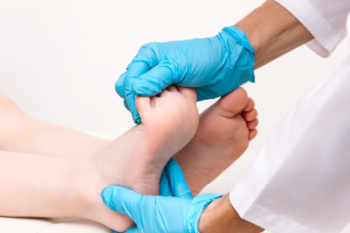
Most children are born with flat feet, as their arches develop gradually over time. During early walking stages, walking barefoot helps improve balance, coordination, and posture by allowing natural foot movement. When it is time for shoes, choose soft, flexible soles that mimic barefoot walking and provide enough room for growing toes. Stiff, restrictive shoes can hinder development. Parents should watch for signs of foot problems, including frequent tripping, limping, excessive toe-walking, or one foot turning inward or outward. Persistent pain, swelling, or difficulty keeping up with peers may indicate an underlying issue. While some concerns resolve as children grow, others may require professional evaluation. If something seems off, it is suggested that you schedule an appointment with a podiatrist who can assess your foot development, provide guidance on proper footwear, and address potential problems early.
Making sure that your children maintain good foot health is very important as they grow. If you have any questions, contact Luis Esquerdo Cruz, DPM of Dr. Esquerdo Podiatry and Laser Center
. Our doctor can provide the care you need to keep you pain-free and on your feet.
Keeping Children's Feet Healthy
Having healthy feet during childhood can help prevent medical problems later in life, namely in the back and legs. As children grow, their feet require different types of care. Here are some things to consider...
Although babies do not walk yet, it is still very important to take care of their feet.
Avoid putting tight shoes or socks on his or her feet.
Allow the baby to stretch and kick his or her feet to feel comfortable.
As a toddler, kids are now on the move and begin to develop differently. At this age, toddlers are getting a feel for walking, so don’t be alarmed if your toddler is unsteady or ‘walks funny’.
As your child gets older, it is important to teach them how to take care of their feet.
Show them proper hygiene to prevent infections such as fungus.
Be watchful for any pain or injury.
Have all injuries checked by a doctor as soon as possible.
Comfortable, protective shoes should always be worn, especially at play.
If you have any questions please feel free to contact our office located in San Juan, PR . We offer the newest diagnostic and treatment technologies for all your foot and ankle needs.